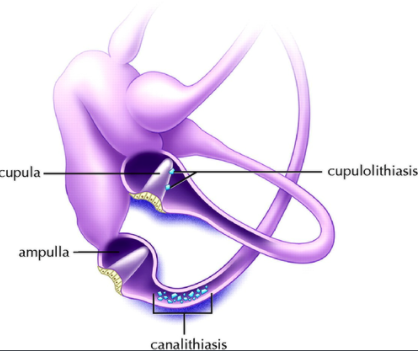Problem Statement
A way to assist performing the Epley Maneuver so that patients suffering from BPPV have alleviated symptoms while also removing the need for physician assistance.
Problem Details
Benign paroxysmal positional vertigo (BPPV) is a vestibular condition that causes many middle age to older individuals, as well as younger people recovering from head injuries such as concussion (1) to have body orientation issues and dizziness due to the brain’s misinterpretation of calcium crystal placement in the ears (2).
This is caused by either cupulolithiasis or canalithiasis as well as debris in the inner ear (3). A visual model of these conditions and their locations relative to the inner ear is displayed below in Figure 1.

The current market has effective treatment measures and devices for BPPV, though they lack at-home rehabilitation capabilities or an at-home treatment program with guidance through the maneuver from the device.
The Epley Maneuver
Figure 2. Epley Maneuver motions as well as ear canal positions for right ear BPPV4
These positions are each for a duration of 30s to 120s.
[1] Hornibrook, J. (2011, July 25). Benign Paroxysmal Positional Vertigo (BPPV): History, Pathophysiology, Office Treatment and Future Directions. R
[2] Benign paroxysmal positional Vertigo (BPPV). (2020, August 18). Retrieved March 28, 2021
[3] You, P., Instrum, R., & Parnes, L. (2018). Benign paroxysmal positional vertigo. Laryngoscope Investigative Otolaryngology, 4(1), 116–123. https://doi.org/10.1002/lio2.230 [4] Hornibrook, J. (2011). Benign paroxysmal positional Vertigo (BPPV): History, pathophysiology, office treatment and Future Directions. International Journal of Otolaryngology, 2011, 1–13. https://doi.org/10.1155/2011/835671

